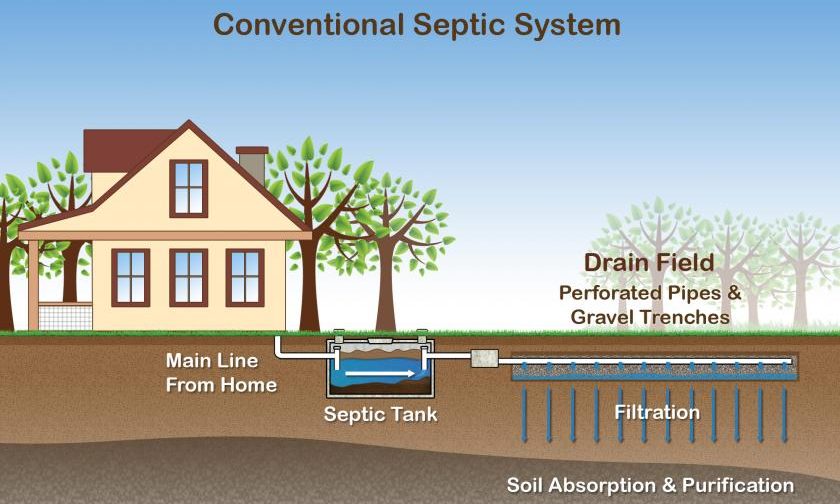Most big-city folks never have to wonder, “What is a septic tank?” That’s one of the privileges of living in a heavily populated area. The local municipality, generally the city, has its own wastewater treatment facility, and all the homes and businesses are hooked up to it. When you flush, take a shower, or do a load of laundry, all the water that is used flows through the pipes in the building, out through a main line, through the city sewer system, and to the wastewater treatment plant. However, laying the lines into neighborhoods is costly and some areas, even in large cities, still don’t have access to the municipal wastewater treatment plant.
What is a septic tank? In short, it’s one part of an on-site wastewater treatment facility, used in homes and businesses that don’t have municipal sewer access or that have not yet hooked up to it.
What is a Septic Tank: The Basics of Operation
When a home or business doesn’t have sewer access, the main line from the building connects to a septic tank, or a reservoir for wastewater. It’s outside the building and is generally buried underground, so it’s often undetectable, even if you’re looking for it. The reservoir handles the first stage of cleaning the wastewater, so it can return to the environment safely and won’t pose a health risk to people and animals in the area.
When the wastewater enters the reservoir, it divides into three layers; scum (buoyant materials that float), sludge (dense materials that sink), and effluent (liquid/ water). In the reservoir, natural bacteria goes to work devouring the solids, so as much as 50% of the sludge can be converted into liquid or gas. As the effluent levels build up, the liquid is allowed to pass through to a second compartment of the reservoir or it may move onto a discharge area. The remaining sludge and scum build up, and have to be pumped out every so often. Most homes need pumping every 3-5 years, but others could require pumping annually, to ensure the system continues to function in top form.

How the System Works Together
When the effluent leaves the reservoir, it’s still not clean, but it is free of most particles. The soil naturally has bacteria and will finish cleaning the effluent, but the effluent must be discharged evenly, so the soil can absorb it properly and the bacteria can work. The part of the system that discharges the effluent is often referred to as an absorption area, leach field, or drainfield. Leach fields send the effluent through a series of underground pipes that are perforated, allowing it to slowly seep into the soil.
Let Don’s Septic & Fill Partner Technicians Help You with All Your Septic System Needs
If you have or need a septic system, “What is a septic tank?” is going to be the first of many questions you’ll have. Our partner technicians are friendly and knowledgeable, and can answer all your questions, as well as install, pump, inspect, and maintain your system. Call us at (386) 202-1391 today.
